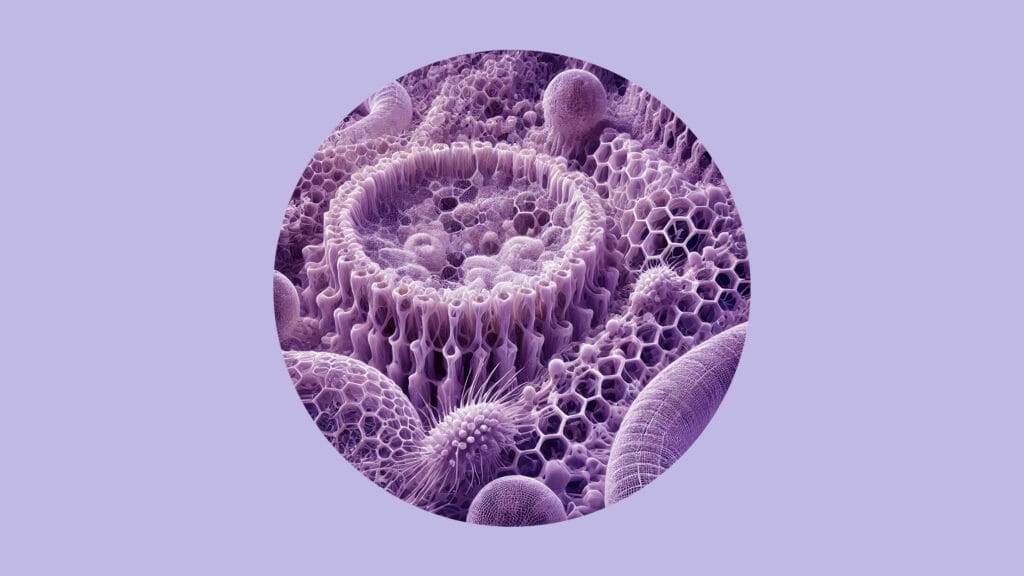The vertebrate mucosal layer is an essential feature of the digestive tract and lubricates the passage of food along, as well as protects it from digestive enzymes. The insect midgut contains the peritrophic matrix, the tissue that is orthologous in both structure and function to the mucosal layer. The peritrophic matrix is an essential organ of the insect digestive physiology as it protects the midgut epithelium from abrasion by rough food particles and proteolysis by digestive enzymes, as well as from infection by pathogens, and damage by xenobiotics such as plant allelochemicals or insecticides. Important functions of the peritrophic matrix and its accessibility via feeding make it particularly a good target site for pest control strategies.
The peritrophic matrix is composed of chitin and proteins. The chitin in the peritrophic matrix is synthesized by the midgut specific chitin synthase, modified by enzymes such as chitin deacetylase, and degraded by chitinases during molting. Structural peritrophic matrix proteins, called peritrophins, interact with the chitin scaffold and contribute structural and functional features to the peritrophic matrix such as integrity, elasticity and permeability. We have been working on the molecular architecture and functions of the peritrophic matrix in the cotton leafworm Spodoptera littoralis (Lepidoptera:Noctuidae) and Leptinotarsa decemlineata. We completed dectection of the entire protein suit of the peritrophic matrices in both species and our data suggest that the biochemical composition of the PM in lepidopterans and coleopterans differ. We are currently working on PM architecture of cockroaches.

